6.2 Large Deployment: Deploying and Configuring
IMPORTANT:The instructions in this section assume that the Filr appliances are being deployed on a VMware server.
If you are deploying Filr on Hyper-V or Xen, refer to the instructions in Installing the Filr Appliance and Configuring the Operating System
in the Novell Filr 1.0.1 Installation and Configuration Guide. In each case, after you reach the point where you accept the license agreement, you can return to the respective deploying sections in this guide and continue on from that point.
6.2.1 Deploying Filr
-
On a workstation with the vSphere client installed, extract the Filr.x86_64-version.ovf.zip file that you downloaded in Section 3.0, Downloading Filr Software until you have a folder containing three files with .mf, .ovf, and .vmdk extensions.
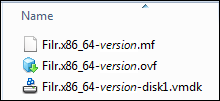
-
Using the vSphere client, attach to your VMware ESX server, then click > .
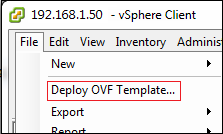
-
Browse to and open the Filr.x86_version.ovf.zip file, then proceed through the various dialogs as you normally would until the virtual machine is deployed.
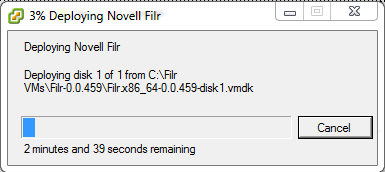
-
Edit the virtual machine settings and add a 100 GB hard disk.
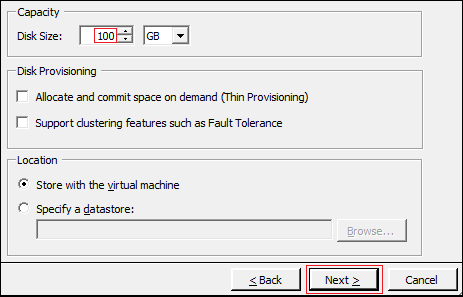
HINT:When you deploy Filr in a production environment, you have a choice to make at this point. You can either add a second hard disk to the appliance or you can specify an NFS mount point for shared storage.
Shared storage lets you provide a more robust and expandable environment by clustering multiple Filr appliances that all access the same storage area. For more information, see the information in the Novell Filr 1.0.1 Installation and Configuration Guide, starting with the table named
Filr Appliance Storage.
-
After the hard disk has been added, click .
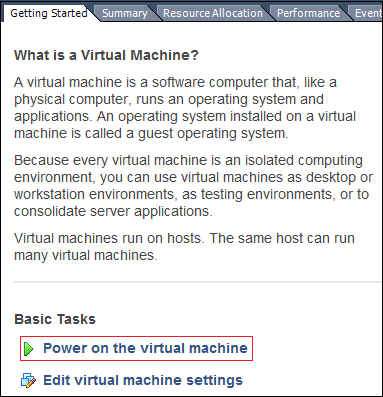
-
After the appliance starts, accept the license agreement.
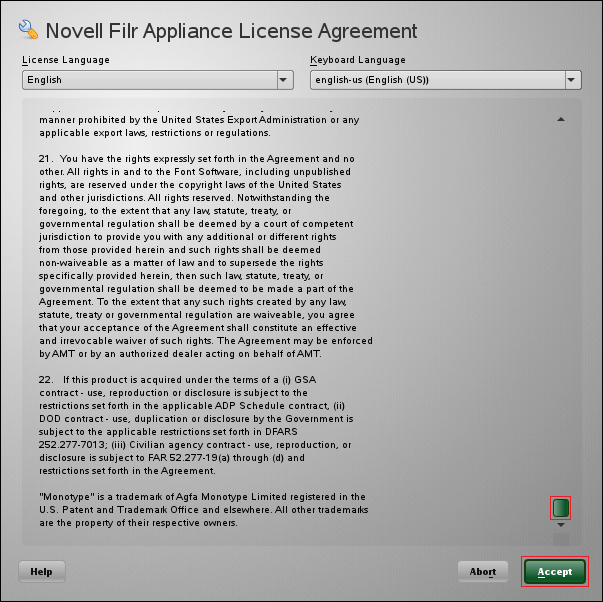
-
Complete the initial configuration settings, substituting the IP address and other settings that you identified in Section 2.0, Hands-on System Requirements for the Filr appliance on your network.
IMPORTANT:Ensure that the settings match the settings of your Windows environment.
For example, the following screen shows the IP addresses and the other information that was used for the Filr appliance that was deployed in a private network when this guide was developed.
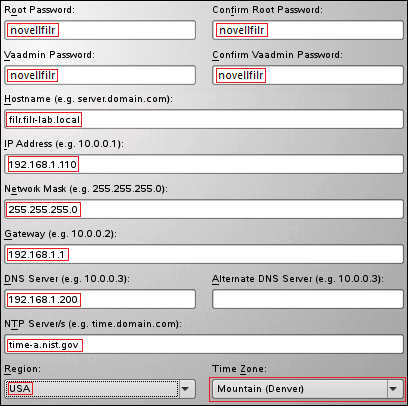
-
Proceed through the screens, accepting the defaults, until the configuration process completes.
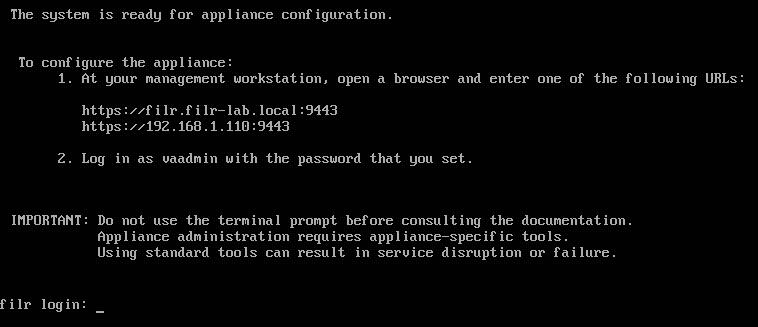
-
Continue with Deploying Search.
6.2.2 Deploying Search
-
On the VMware workstation host machine, extract the Filrsearch.x86_64-version.ovf.zip file that you downloaded in Downloading Filr Software until you have a folder containing three files with .mf, .ovf, and .vmdk extensions.
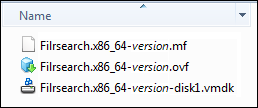
-
Proceed as you did with Filr by deploying the Filrsearch OVF template file, and so on until the virtual machine is deployed.
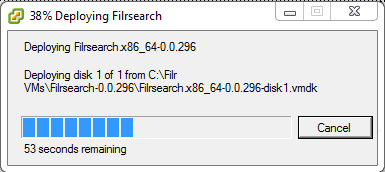
-
Edit the virtual machine settings and add a 25 GB disk.
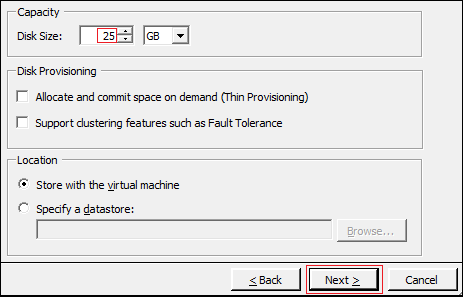
-
After the hard disk has been added, power on the virtual machine.
-
When the license agreement appears, read and accept it, then complete the initial configuration settings, as shown below. Substitute the IP address and other settings that you identified in Section 2.0, Hands-on System Requirements for the Filrsearch appliance on your network.
IMPORTANT:Ensure that the settings match the settings of the Windows environment.
For example, the following screen shows the IP addresses and the other information that was used for the Filrsearch appliance that was deployed in a private network when this guide was developed.
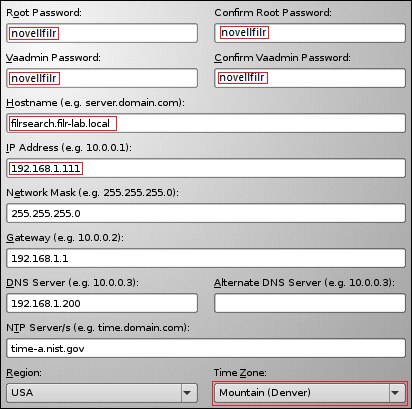
-
Proceed through the screens, accepting the defaults, until the configuration process completes.
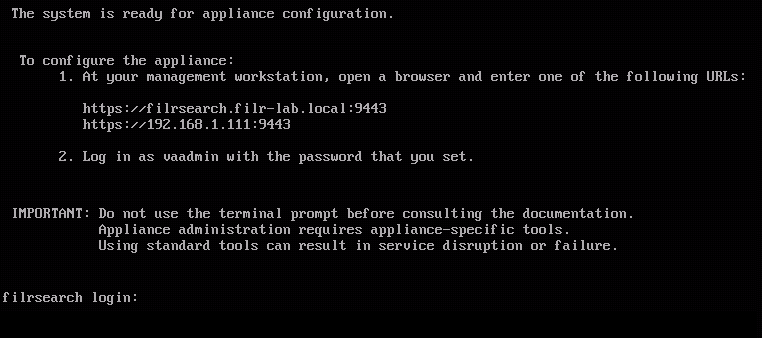
-
Continue with Deploying MySQL.
6.2.3 Deploying MySQL
-
On the VMware workstation host machine, extract the MySQL.x86_64-version.ovf.zip file that you downloaded in Downloading Filr Software until you have a folder containing three files with .mf, .ovf, and .vmdk extensions.
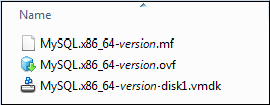
-
Proceed as you did with Filr and Filrsearch by deploying the MySQL OVF template file, and so on until the virtual machine is deployed.
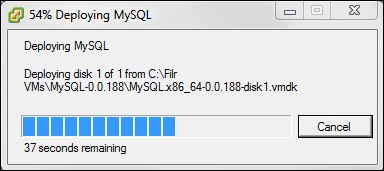
-
Edit the virtual machine settings and add a 100 GB disk.
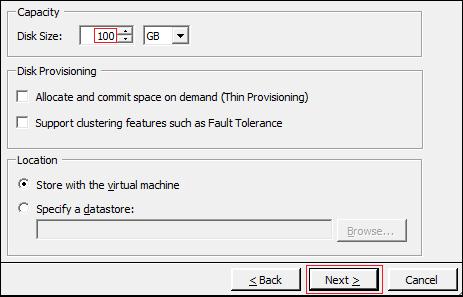
-
After the hard disk has been added, power on the virtual machine.
-
When the license appears, read and accept it, then complete the initial configuration settings as shown below. Substitute the IP address and other network settings that you identified in Section 2.0, Hands-on System Requirements for the MySQL appliance.
IMPORTANT:Ensure that the settings match the settings of the Windows server.
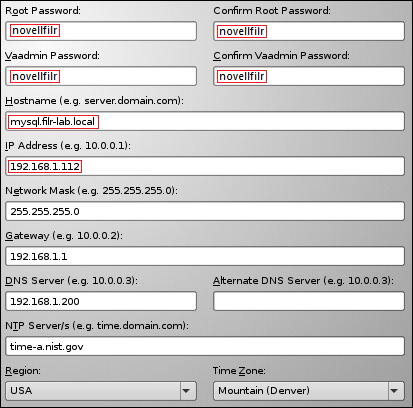
-
Proceed through the screens, accepting the defaults, until the configuration process completes.
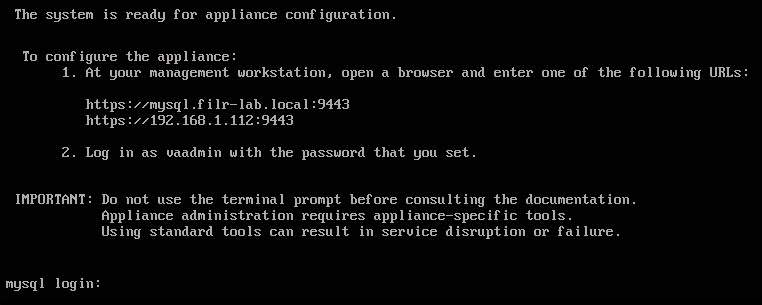
-
Continue with Configuring the MySQL Appliance.
6.2.4 Configuring the MySQL Appliance
-
Launch your management browser on the management workstation and enter the following URL: https://MySQL-appliance-ip-address:9443.
-
Click through the security warnings and accept the certificate if needed.
-
Log in with Username: vaadmin and the password you set for the vaadmin user in Step 5.
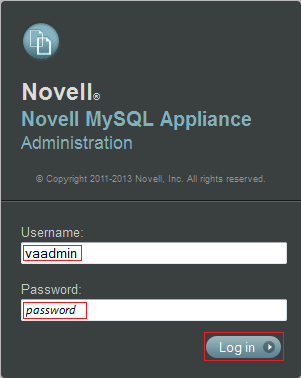
-
Click the icon.

-
Type root and root, then click .
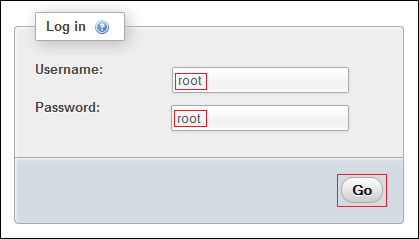
-
Click .

-
Create a database user for the Filr appliance by doing the following:
-
Click .

-
Type the required information in the fields indicated.
Field Name
Value to Type
User name
filr
Host
ip_address_of_Filr_appliance
Password
password
Re-type
password
-
Select , then click .
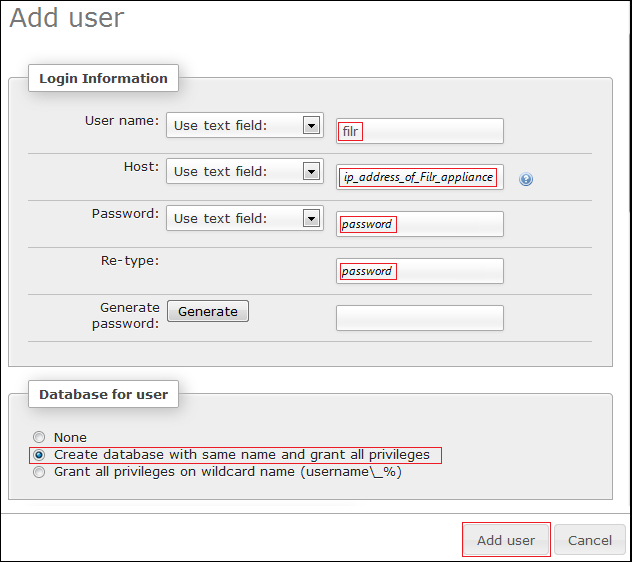
-
-
Secure the MySQL appliance by changing the root user password.
-
In the section, select , then click .
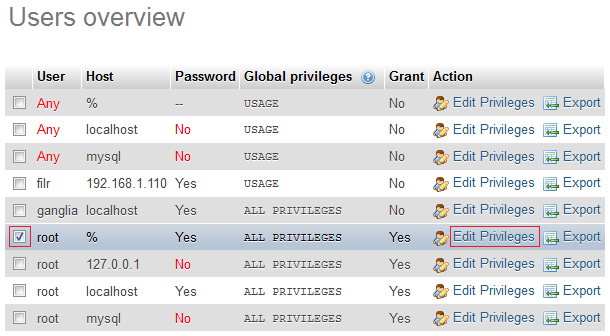
-
Scroll down to the section, type a new password in both fields, then click .
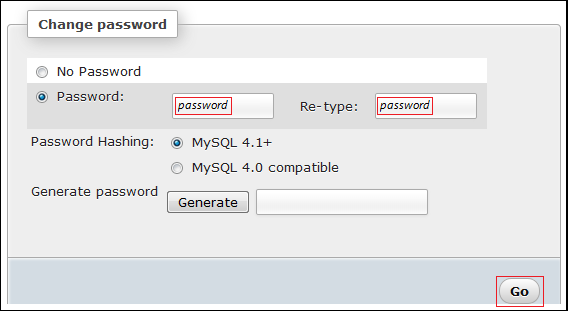
-
-
Continue with Configuring the Search Appliance.
6.2.5 Configuring the Search Appliance
-
In your management browser, enter the following URL: https://Filrsearch-appliance-ip-address:9443.
-
Click through the security warnings and accept the certificate if needed.
-
Log in with Username: vaadmin and the password you set for the vaadmin user in Step 6.
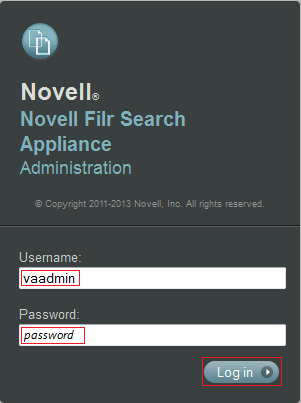
-
Click the icon.

-
Click .
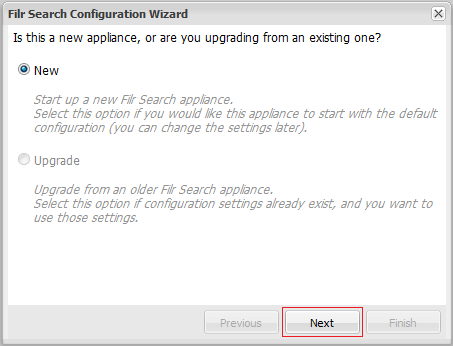
-
Type and confirm a for the search service, then click .
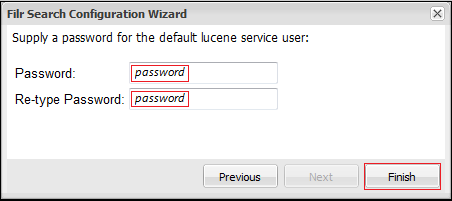
-
Click .

-
When the password is updated, continue with Configuring the Filr Appliance.
6.2.6 Configuring the Filr Appliance
-
In your management browser, enter the following URL: https://Filr-appliance-IP-address:9443.
-
Click through the security warnings and accept the certificate if needed.
-
Log in with Username: vaadmin and the password you set in Step 7.
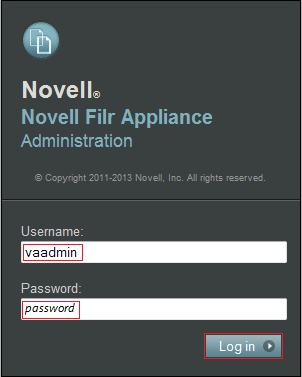
-
Click the icon.

-
Ensure that is selected, then click .
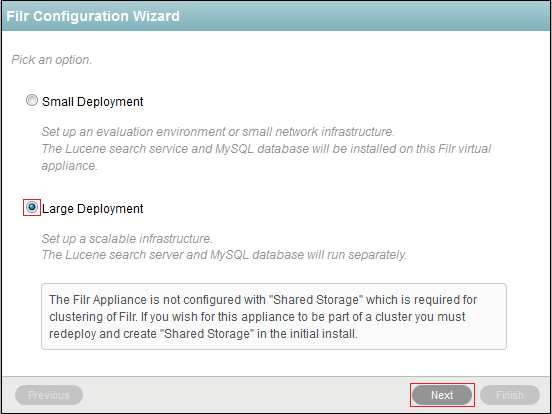
-
Type the IP address of the MySQL appliance in the field, and the that you specified in Step 7.b, then click .
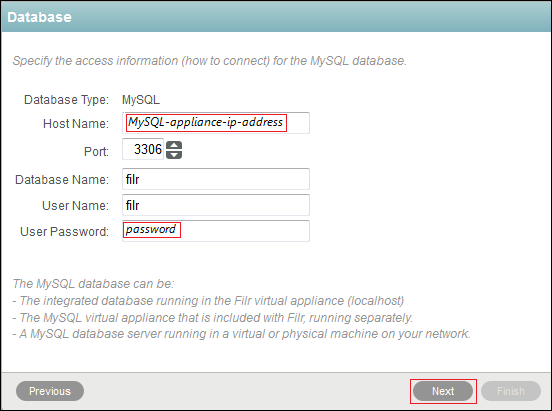
-
Type the IP address of the Filrsearch appliance in the field, and the that you specified in Step 6, then click .
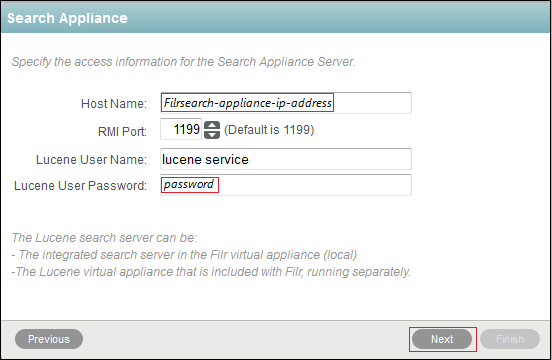
-
Click .
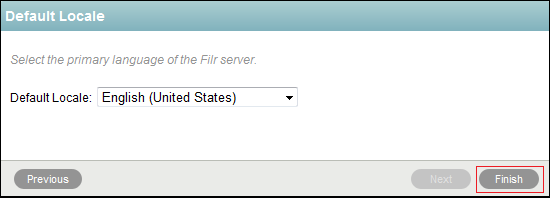
You now have a basic large deployment Filr infrastructure.
Continue with Section 7.0, Securing LDAP Communications between Filr and Active Directory.